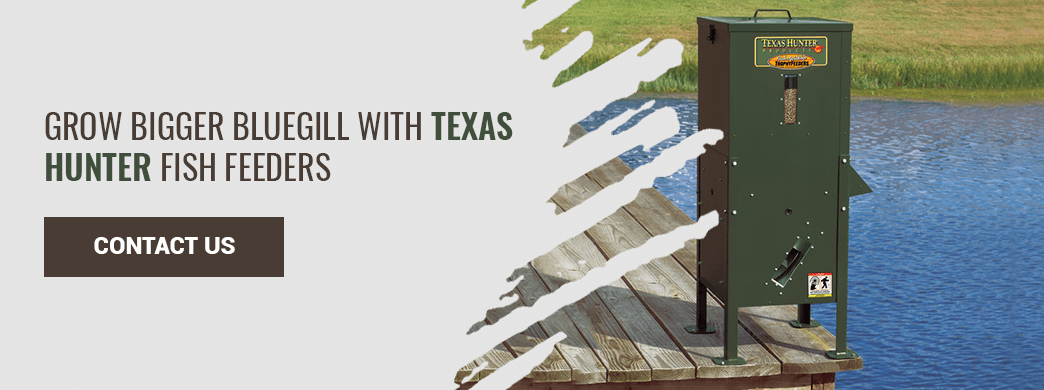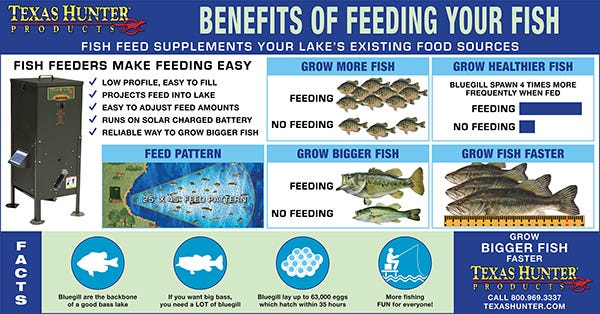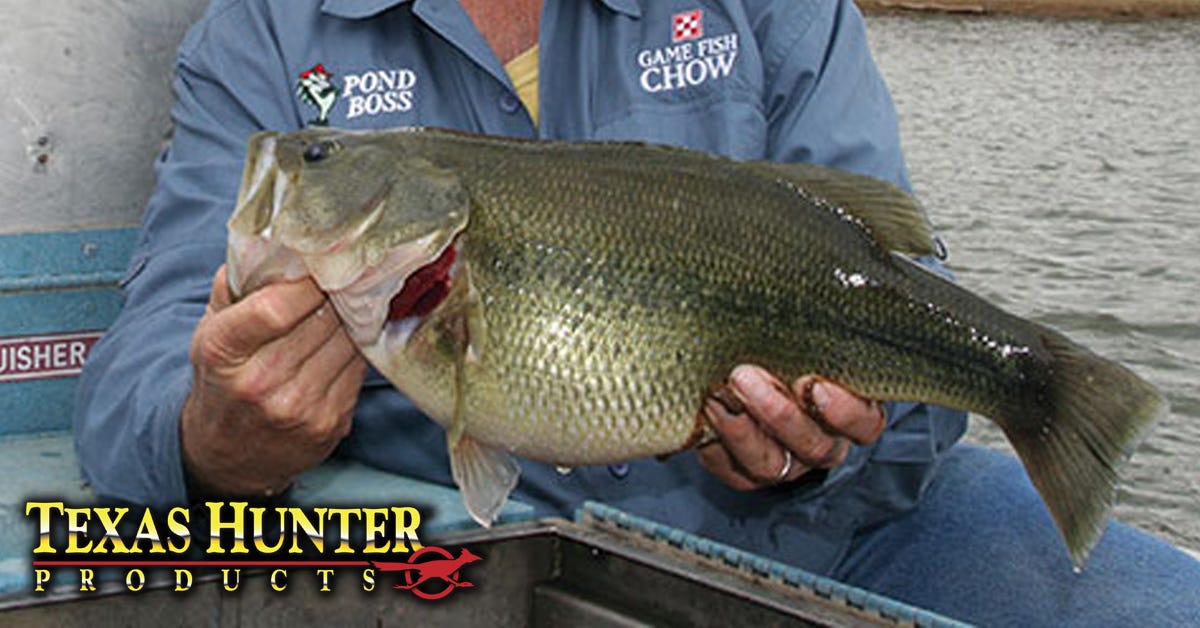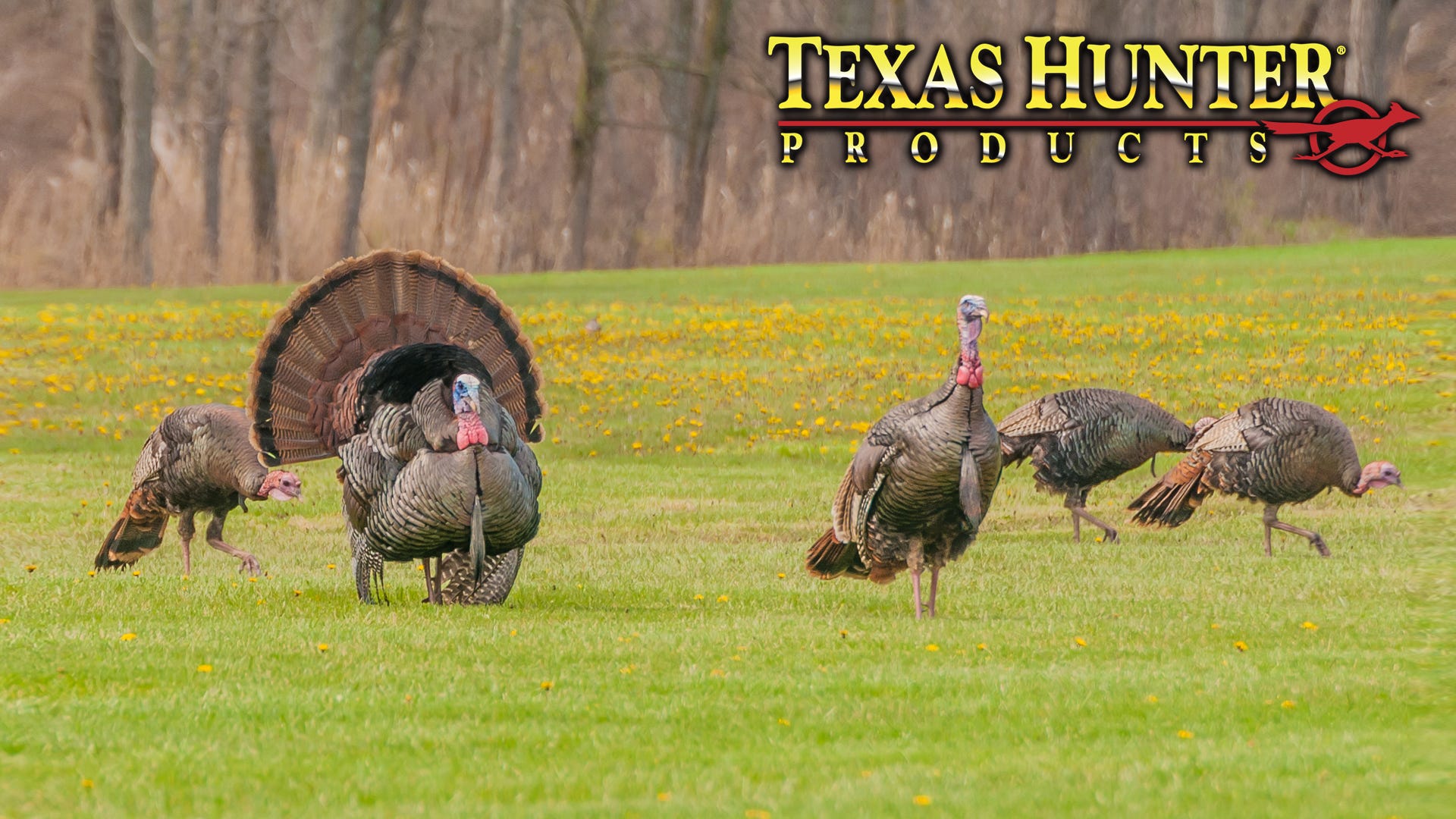- Apr 10, 2020
How To Grow Big Bluegill Fast?
Do you want your pond or lake to be the go-to spot for fishing and outdoor fun? One of the best ways you can ensure a thriving pond scene is to introduce bluegill to your aquatic ecosystem. Bluegill are one of the simpler fishes to catch, and they can grow to be a decent size, depending on the amount of available space in the water and several other factors. They also reach maturity quickly and can act as natural food for other, larger game, such as bass.
Bluegills are easily recognizable due to the shimmering shade of light blue on their lower jaw and gill cover. Aside from their namesake blue, the rest of a bluegill's color depends on sex, age, breeding season and the clarity of your pond or lake water. Shades vary between grey, copper-orange, purple and dark teal. They are a type of tall, flat sunfish with small mouths and long, pointed pectoral fins.
Average Bluegill Size
The average adult bluegill can reach lengths between six and 10 inches. In terms of weight, most bluegill fall between one and two pounds. The record for the largest caught bluegill weighed a whopping four pounds and 12 ounces.
The size of a bluegill depends on several factors, including the following:
- Age: Like most fish, bluegill can take several years before they reach their full size. Because the average bluegill lives to be from 4 to 11 years of age, you will likely have a range of different sized bluegill in your pond over time.
- Room to grow: Fish need plenty of room to grow, which means it's essential not to overcrowd your pond or lake. An overcrowded body of water can not only stunt fish growth, but it can also lead to weak, malnourished fish.
- Nutrition: Adequate nutrition is essential for helping bluegill reach their maximum height and weight. Unsure what to feed your bluegill? We'll talk a little more in-depth about feeding bluegill in a pond or lake in a few minutes.
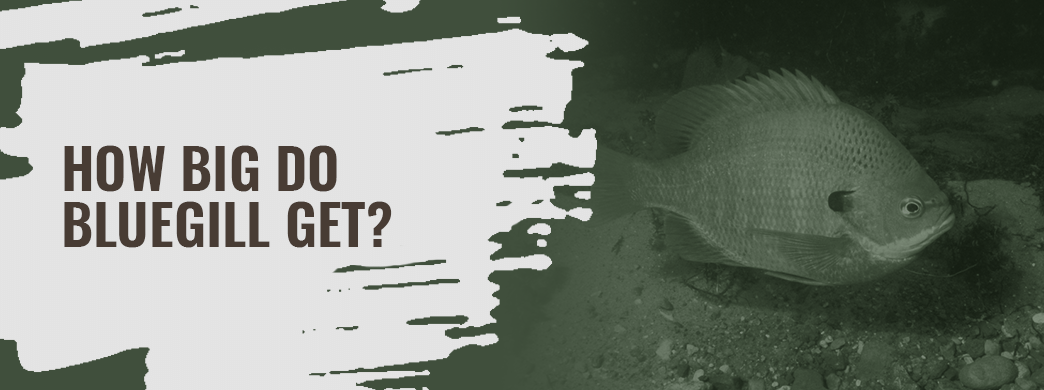
How Fast Do Bluegill Grow?
Bluegill growth rate depends on the same combination of factors as their size, but here is a reasonable estimate for what you can expect from a pond of well-fed, active and healthy bluegill.
- At 1 year of age: Bluegill will likely fall between 4.5 and 6 inches.
- At 2 years of age: Bluegill will likely fall between 6.5 and 8 inches.
- At 3 years of age: Bluegill will likely fall between 8 and 8.9 inches.
- At 4 years of age: Bluegill will likely fall between 8.7 and 9.4 inches.
- At 5 years of age: Bluegill will likely fall between 9.5 and 10 inches.
After five years, your bluegill will probably reach full size. However, giant bluegill could continue to grow, depending on specific conditions inside your pond or lake.
What to Feed Bluegill
Nutrition and an abundance of healthy food are essential for the growth and sustainability of your bluegill population. Bluegill prefer to eat during low light, such as at dusk, but are "sight feeders", and often eat anything they find in the water, whenever they see it. These food sources include bugs, snails, worms, plankton, algae, larvae, fish eggs and small fish. One of the best nutritional decisions you can make for your bluegill is feed pellets, which you can easily dispense via an automatic fish feeder. Fish feed pellets come in small, nutrient-packed bites and can result in healthy, big bluegill.
Bluegill Pond Management Tips
If you want a healthy, long-lasting bluegill population, you must take care of your lake or pond. Take steps to make your pond or lake a comfortable place for your fish. Bluegill love hiding and spawning among rocks, sand, deep weeds, shallow water and in beds of underwater gravel. Contact us for a lake manager in your area for advice on water quality, stocking fish and overall healthy pond and lake management strategies for your part of the country.
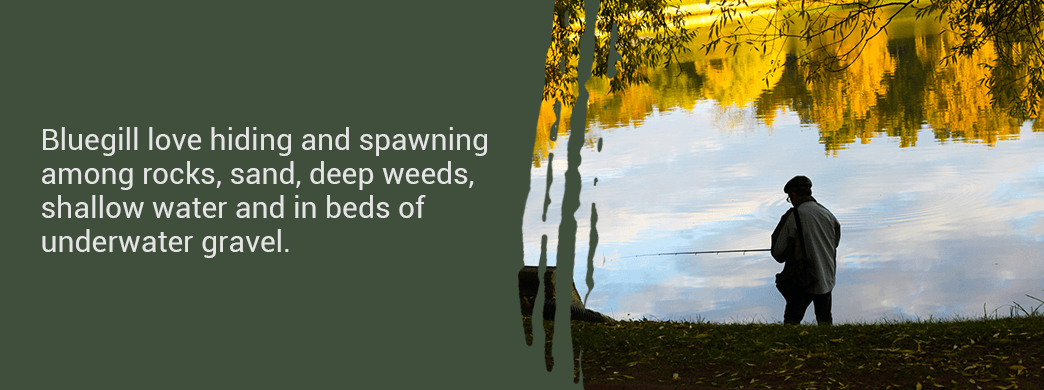
In addition to maintaining a clean, cared-for body of water, try implementing these bluegill pond management practices.
- Check the waterfowl: Although birds are beautiful to look at, herons, ducks, geese and other birds can multiply and quickly overrun your lake or pond, stealing food and nutrients from your fish.
Track breeding: If you track the breeding and spawning season of your bluegill, you will have a good indicator of your lake's fish heath and population. Spawning takes place when the water is warm, in temperatures between 65 and 80 degrees Fahrenheit. The process takes about one week. - Keep catch records: Keeping catch records of all the fish in your lake or pond is the best way to stay abreast of the condition of your water and its inhabitants. Each time you catch a fish, note the size, sex and approximate amount of body fat it has. Use this information to gauge the water quality and amount of available nutrition. Accurate record-keeping is also the best way to help you avoid overharvesting or overstocking your pond.
- Don't overharvest: As fun as it is to open your pond or lake for fishing, be careful not to overharvest your bluegill population. As some fish reach maturity, they will naturally die of old age. You want to make sure there are plenty of young fish to take their place, so you do not deplete your population too quickly. You could also choose to be selective about which fish you decide to keep and which you catch and release. For example, if you are trying to avoid overpopulation, you could try to remove more females than males. If you catch a young fish, toss it back into the water and keep fishing for more mature fish.
- Avoid stocking competing species: Avoid stocking your lake or pond with too many competing species. For bluegill, this means channel catfish, grass carp, trout and bass — of both the largemouth and striped varieties. If you are stocking bluegill to be a food source for a larger fish, just be aware of the predator-to-prey ratio. Your local lake management professional can be a great resource for stocking amounts and ratios and the best times of year to add fish to your pond or lake.
Grow Bigger Bluegill With Texas Hunter Fish Feeders
If you want to grow healthy, big bluegill that you can use to grow even bigger bass, your first step is making sure they have plenty of high-quality food. The best way to do this is by investing in an automatic fish feeder from Texas Hunter Products. At Texas Hunter Products, we carry dock, bank and hanging fish feeders. Each fish feeder comes equipped with advanced features that make it easier than ever to supply your fish population, including:
- A premium digital timer with 5-year warranty that feeds up to 9 times daily
- A powerful, centrifugal air blower system
- Food projection up to 45-feet into the water with a 20-foot wide feed pattern
- A rechargeable battery
- Built-in sight glass to make checking feed level easy from land or across the pond or lake
- The durable, galvanized steel hopper construction will never rust
- A lockable lid with lockable timer & battery access door
Visit us online to learn more about our automatic fish feeders, or check out our blog for more helpful tips on growing bigger fish faster.
Thanks to Pond Boss, Texas A&M, & Game and Fish.


